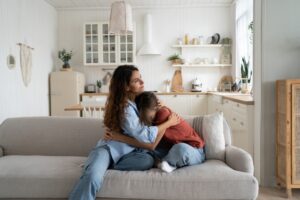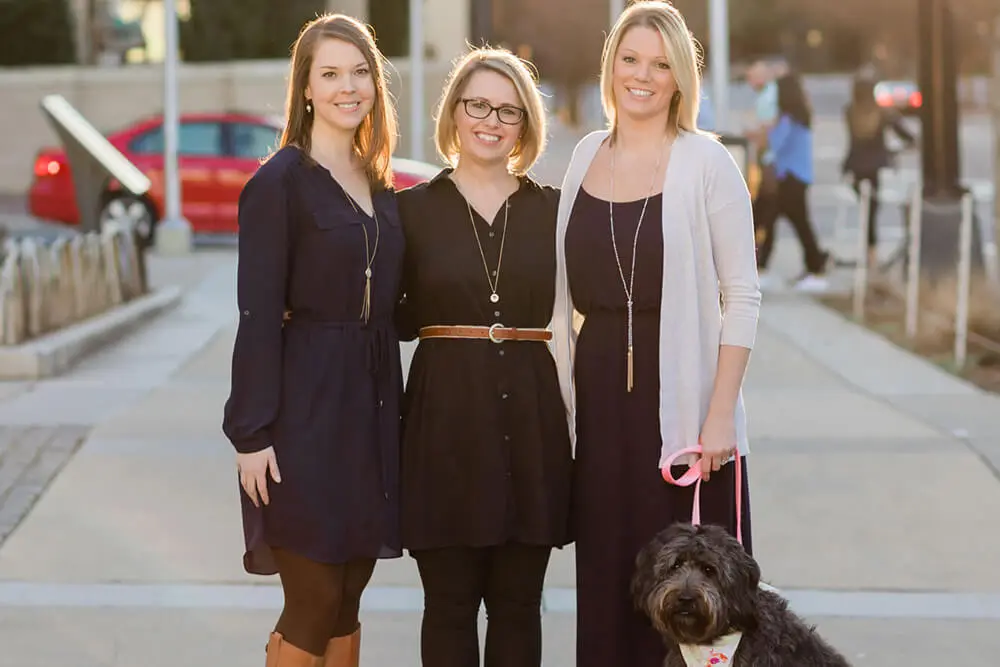Childhood anxiety and family accommodation go hand in hand. Watching your child struggle with anxiety is painful and exhausting. Since parents are naturally driven to protect their kids, they develop methods of alleviating anxious feelings. When parents make changes in their own behavior to help their child avoid or lessen feelings of anxiety, this establishes a family accommodation which initially creates some relief for the child and allows the family routines to progress without as much interference from anxiety. However, as the accommodation continues and the child is able to avoid that particular anxiety provoking experience, anxiety around that stressor actually worsens! 97% of parents of anxious children report that their child’s experiences with anxiety have led to changes in their own behavior, so if you recognize yourself here, you are in good company!
Accommodations can be anything that either involves the parent participating in anxious behavior or modifies the family’s routines and schedules. Some examples are things such as staying in your child’s room until they fall asleep, reviewing the days’ plans repeatedly and avoiding last minute changes, or reassuring your child that they are healthy multiple times per day. Anything which is intended to keep your child from becoming anxious and you would not do for a non-anxious child, is an accommodation. The child comes to rely upon these accommodations until they believe they can no longer function without them. The once helpful acts become an unshakeable routine which confines the entire family to planning their day-to-day existence around anxiety.
So, if accommodation is not the answer, parents can feel confounded and uncertain what to do instead! The SPACE (Supportive Parenting for Anxious Childhood Emotions) model empowers parents to support their child while removing accommodations. Clinicians utilizing the SPACE model walk parents through a series of structured yet flexible task-oriented sessions to identify and remove accommodations and effectively communicate support.
The major tenet of this model is recognizing and removing accommodations and since accommodations are changes in parental behavior designed to minimize anxiety, parents can remove these behaviors even with a child who is not engaged or is resistant to treatment. When parents stop providing the accommodations their child is then able to learn that they can handle anxiety independently. Additionally, keeping the desired actions entirely within the parents’ control, allows the parents to be sure the plan can be carried out completely—without ever having to ask anything of their child. Convincing anyone to carry out a plan which is guaranteed to create some initial distress is challenging enough. Most children with anxiety are very risk-adverse and wary of making change—plus, the anxious child is fully convinced that the accommodation is the only thing standing between them and overwhelming distress or even true physical threat! Seen through that lens, maintaining the accommodation makes sense and to challenge it would be foolish. Children need their parents to intervene to demonstrate that their accommodation only reinforces anxiety rather than protecting them. Parents can carry out the entire SPACE program to reduce anxiety’s interference in their child’s life and family environment even if their child refuses to acknowledge that anxiety is a problem.
To be clear, this focus on parental behavior is not because parents are responsible for the anxiety condition. In reality, parents who accommodate are responding to their child’s anxiety in the most natural way possible! From even before birth, parents seek to provide a refuge to their kids. When a baby experiences distress, the baby will communicate this distress through crying and seeking connection with their parents who provide safety and regulation. It is innate in parents to want to provide this soothing connection whenever their child displays the social signals of distress, including anxiety! This push—pull between children with anxiety and their parents can lead parents to feel ‘manipulated’ and as though their child is ‘using’ their condition. However, just as parents are innately driven to protect and soothe, kids are driven to express their emotional needs and seek reassurance.
SPACE recognizes that simply removing accommodations and stepping away is very challenging for most parents as they want to help their child feel well and confident. Plus, kids are going to continue to signal their anxiety to their parents so a way of providing encouragement and maintaining connection is needed. As parents remove accommodations, SPACE helps parents develop a new supportive response to their child’s anxiety. SPACE describes support as ‘acceptance + confidence’ and asserts that most parents of children with anxiety tend to express one element more than the other however both are essential to combat the lies anxiety tells. Anxiety tells us, ‘I can’t do this,’ ‘I’m not good enough,’ ‘something bad is going to happen’ and support reminds us that both ‘this is hard’ and, ‘I can handle it.’ Without acceptance, the very real distress the child is experiencing is minimized leaving the child feeling alone and as though they are a disappointment or failure. Without confidence, the child may continue to believe they are not equipped to feel anxious and be okay.
When your child has an anxiety condition, the powerful pull of anxiety effects the entire family. SPACE offers a lifeline to parents seeking ways to support their child and to help them shake off the grip of anxiety. To learn more about the SPACE program, visit their website, call our office and/or read Breaking Free of Child Anxiety & OCD by Eli Lebowitz, the program’s creator. You can find it here and on our office bookshelf!



